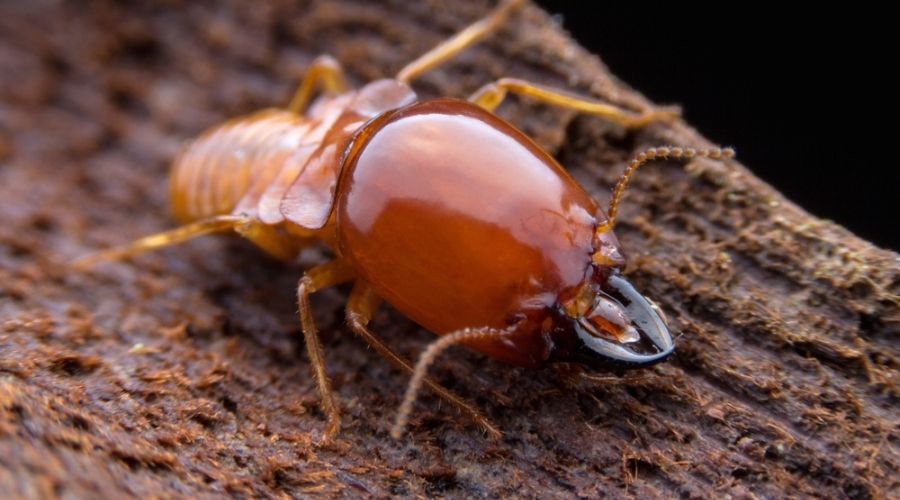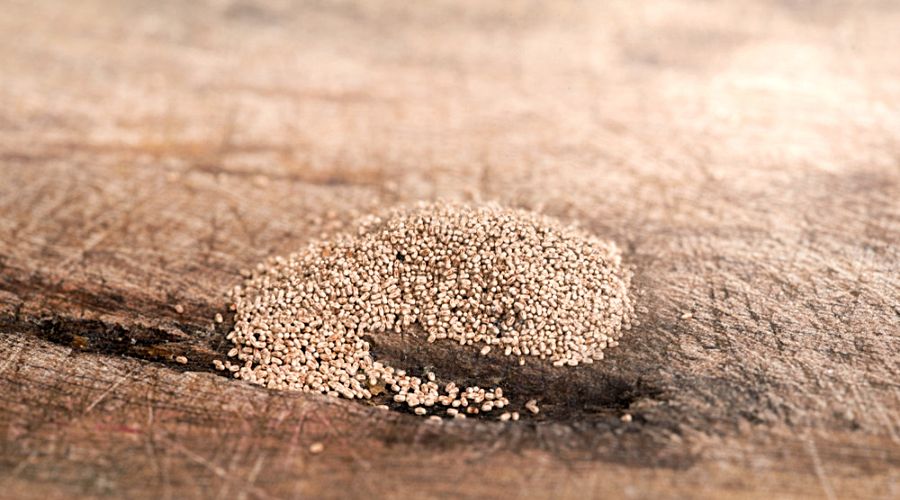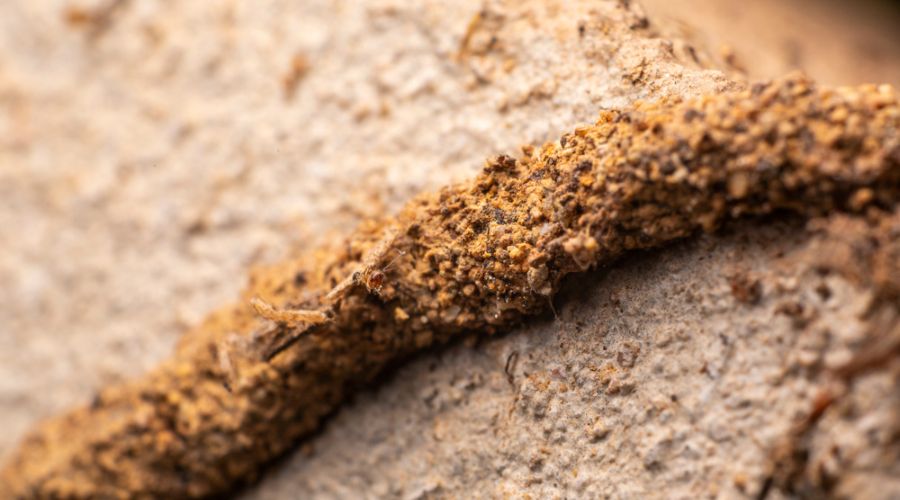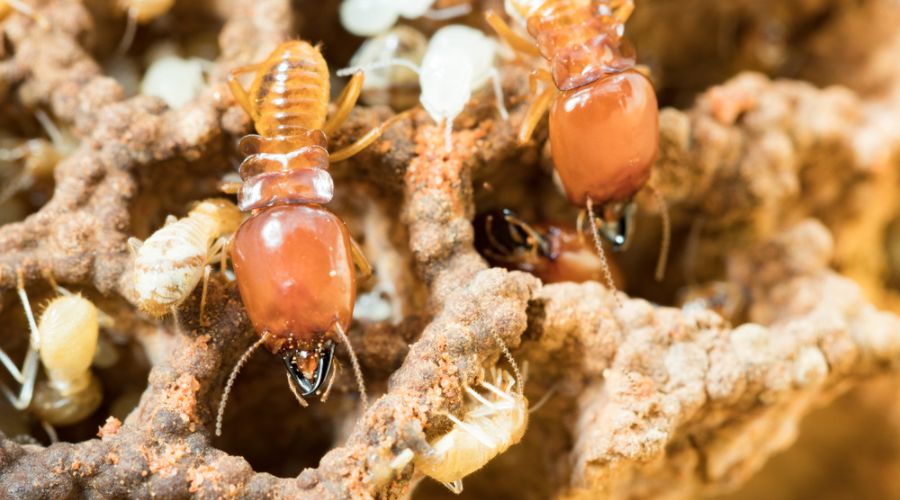Termites are sometimes called “silent destroyers” because they can cause severe damage to your home while remaining unseen. Each year about 600,000 homes deal with termite damage. It is estimated that termites cause over $5 billion in property damage in the United States each year.
Recognizing an infestation before it gets worse can save you thousands of dollars. You must spot the warning signs as quickly as possible to minimize damage.
Signs You Have Termites

Here are eight ways to tell if you have a termite infestation.
Damaged Wallpaper or Paint
Termites sometimes create termite galleries to gather food and congregate. Sometimes, damaged wallpaper or paint shows evidence of these tubes or an infestation. Look for:
- Small pinholes where termites have eaten through
- Dented or sunken areas
- Bubbling paint
- Buckling wood
- Peeling or discolored wallpaper
- Narrow and sunken winding lines
Frass

Frass is insect excrement. It contains what the insect has been eating, and the term can refer to any excrement left behind by the insect.
Drywood termite frass appears as tiny oval-shaped pellets with six concave sides and rounded ends. They are about one millimeter in length and can form small mounds that look like salt and pepper.
Subterranean termite frass is more liquid than drywood termites. It may be hard to spot because of the consistency, so be on the lookout for more signs if you suspect an infestation but do not see frass.
Hollow-Sounding Wood
When wood is infested with termites, it will sound hollow or paper-like if you knock on the affected area. Termites can cause damage to wooden architraves, beams, ceilings, and rafters in attics. They may also cause damage to laminate flooring and baseboards.
Mud Tubes

Mud tubes are also known as shelter tubes. Termites use these to enter your home, as well as move around your home. These are usually found on the outside of your home, crawling up the outside baseboards, and are mainly made of soil.
Termite Swarmers
Termite swarmers are adult termites that fly in large swarms to make new colonies and reproduce. They have two pairs of large, pale wings and are often mistaken for flying ants.
Discarded Wings

Swarmer termites discard their wings after they have found a place to colonize and reproduce. If you find discarded wings, you may have a termite infestation. Discarded wings are usually found near windows and doors around your property’s foundation.
Quiet Clicking Sound and Other Noises
Termites can detect vibrations and noises using several organs which are found at the base of their antennae and on the tibia, which makes a clicking noise. A chewing or munching noise may be heard as worker termites chew at your wood. Soldier termites bang their heads against the wood when the colony is disturbed to signal danger.
Stuck Doors and Hard-to-Open Windows
When termites munch on wood in doors and windows, it creates moisture. This can warp the wood and make windows and doors difficult to open.
Suspect a Termite Problem? Call Us Today!
Having a regular inspection by a pest professional in Forney, TX can help minimize the risk of costly or irreparable damages to your home. The type of extermination approach may differ depending on the termite species you have. Our expert exterminators can properly identify evidence of termites and check the extent of damages. Call us now for a free quote and schedule an inspection today.




